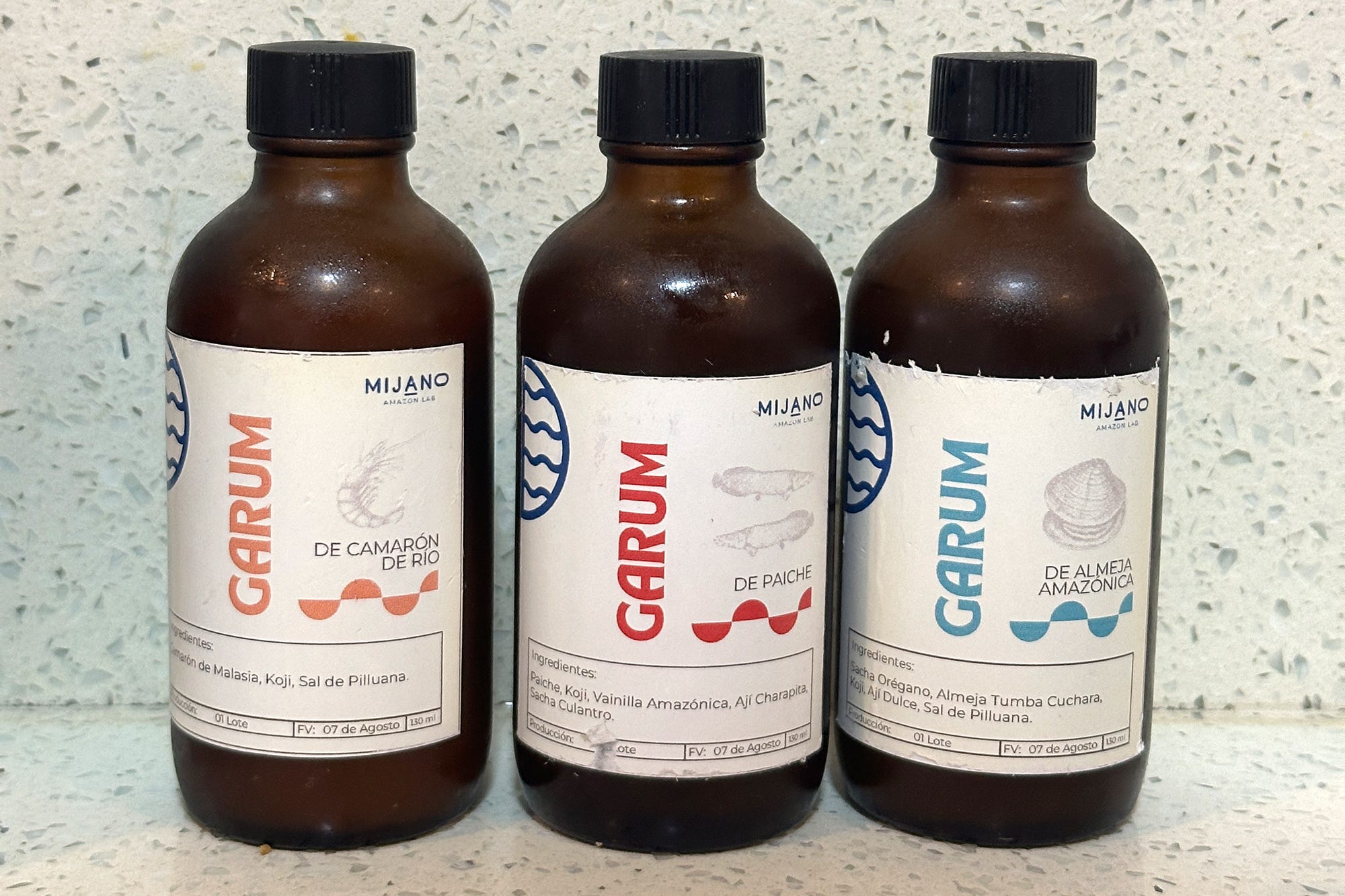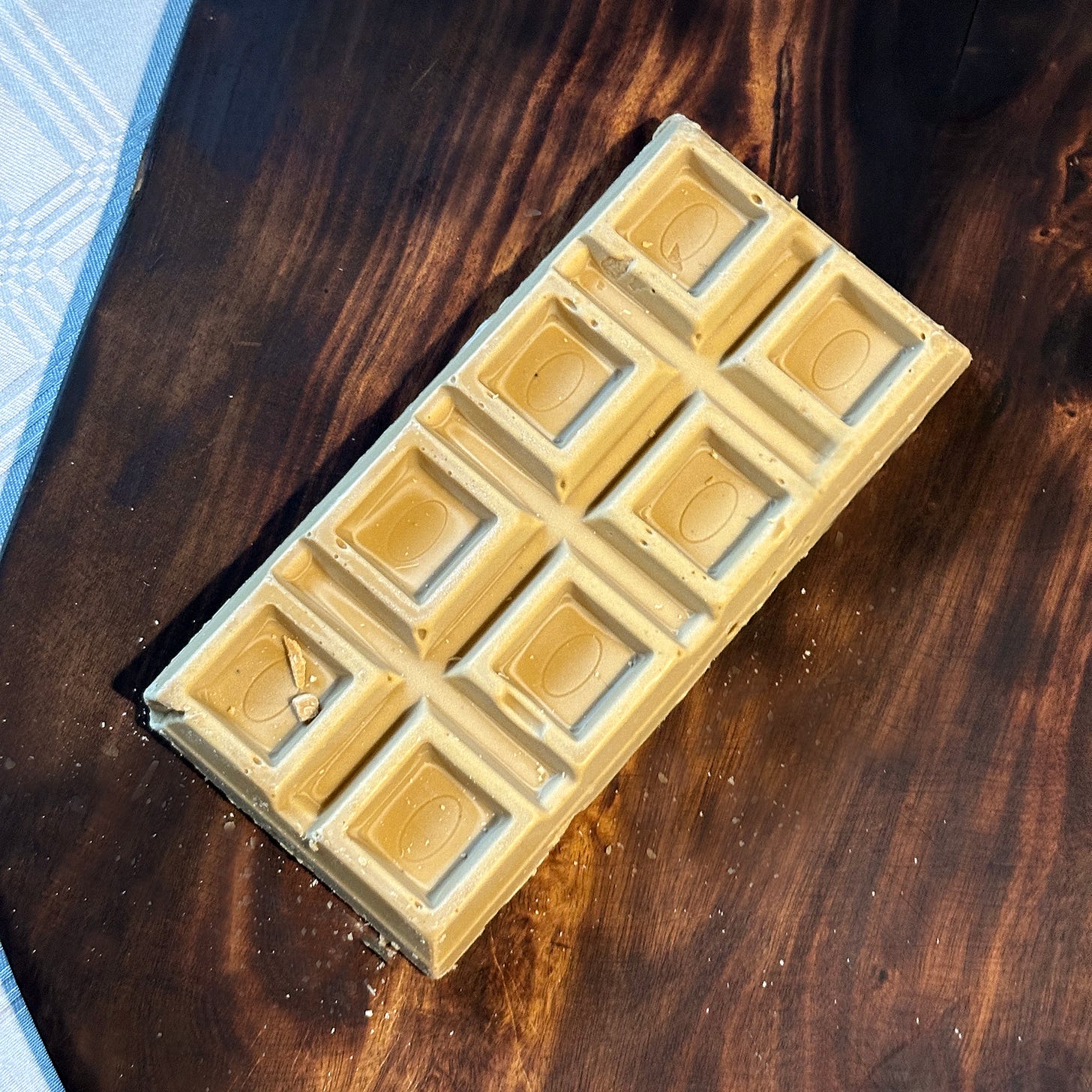When returning home from trips around the Amazon for book research over the past year, my bags are usually filled with all sorts of hyperlocal ingredients. Often they are the raw product, like Brazil nuts, or preserves, such as chiles and jams, that I find in unmarked jars in markets. I’m also coming across an increasing number of commercial food products, made in small batches.
These small products are part of the growing Amazonian bioeconomy. A diverse collection of artisan goods that are made from standing forests. Many are made by indigenous producers and rural communities facing constant threats of deforestation. Others have been started by conservation minded entrepreneurs or with the help of NGOs. Some of them are new, while others have been around a little while but are new to me.
Paiche, Clam & Shrimp Garums - Mijano Amazon Lab – Peru
Mijano, an experimental lab being run out of the restaurant La Patarashca in the town of Tarapoto, Peru, has been at the center of some astounding culinary products in recent years. They have been making charcuterie from Amazonian fish and game, a glaze from cacao mucilage, coffee vinegars and even their own vermouth made from Amazonian grapes macerated in wild botanicals. Their newly released line of garums use a yuca substrate during the inoculation phase with Aspergillus oryzae (koji) instead of rice, and they are unlike anything I’ve ever tasted. Each has its own characteristics, but the amount of depth they can give to stews or cocktails cannot be understated.
Ají Yuquitania – Cocina Intuitiva – Colombia
In the northern Amazon, blends of chiles are a typical ancestral ingredient. Every family and community has their own blend of chiles that they use, at least a handful of different varieties in an array of colors, shapes and flavors, which they smoke together and then pulverize into powder. Cocina Intuitiva’s version, mixed with toasted sesame seeds and marine salt, is sourced from communities along the Rio Vaupés in southeastern Colombia.
Macambo Bars - Canopy Bridge - Ecuador
Jacob Olander and Marta Echavarria and the growing team at Canopy Bridge in Archidona, Ecuador have helped create a market for the roasted seeds of macambo (Theobroma bicolor), a fruit related to cacao. The seeds are pure protein, with more than almonds and walnuts, plus loads of fiber. Mostly they are eaten roasted, though they can also be skewered and grilled or cooked in stews. Canopy Bridge sells them roasted with salt, covered in chocolate, a spicy version with neapia (tucupi), but they have also started producing a bar of macambo, like a chocolate bar, with 75 percent macambo + milk. It's creamy, nutty and a little fruity. Production is still limited, but I could see this becoming an important chocolate alternative as macambo growing expands in the Western Amazon.
Neapia – Siekonomi – Ecuador
Allegedly the only indigenous community in Ecuador’s Amazon that makes the black form of tucupi is the Siekopai or Secoya, who were displaced by the Peru-Ecuador war in 1940 and today only number around 800 in the country. Their version, called neapia, is concentrated and spicy, and is being sold in 140 gram jars. It’s one of the three ingredients in a soup they make called Piara’ka, along with fish and yuca.
Keep reading with a 7-day free trial
Subscribe to New Worlder to keep reading this post and get 7 days of free access to the full post archives.





